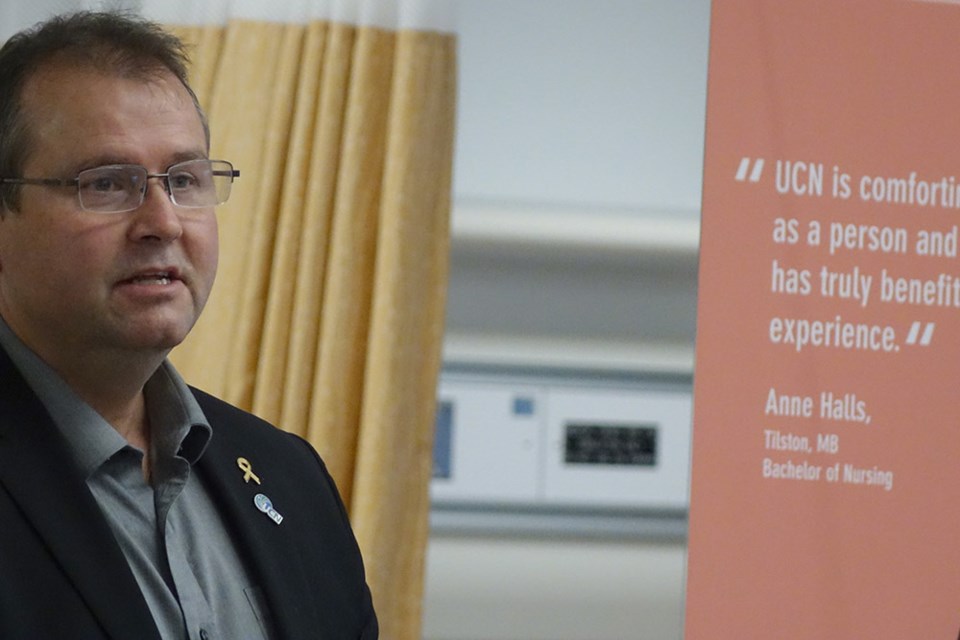The School District of Mystery Lake (SDML) will get $200,000 more in base funding and the property tax offset grant for the 2022-23 school year than it did for the current one.
Base funding for next school year will be $33.4 million and the district will also get a $200,000 property tax offset grant so it can maintain the education portion of Thompson property taxes at the same level they were at last year.
In 2021-22, announced funding for the district was $33.3 million plus a $100,000 property tax offset grant.
The funding and property tax grant increase is about six-tenths of one percent but the SDML will also receive a one-time wage assistance amount of $1.4 million.
Manitoba increased funding for schools in the province as a whole from $1.35 billion last year to $1.47 billion this year, an increase of about 0.9 per cent, including $77 million in one-time wage assistance payments. Without that amount, the $43 million increase works out to just over three per cent more than last year, although the province also contributed additional one-time funding amounts of $63 million and $80 million during the 2021-22 school year. if those are added to the funding and property tax offset grant amounts announced last February, the total funding for this year has actually dropped slightly.
The funding was announced Feb. 4 by Education Minister Wayne Ewasko, who said Manitoba spends the second-most per student of any province in Canada at $15,412 per pupil
“We are maintaining this position at the national level with a further investment of $120 million this year,” said Ewasko. “School divisions have told us that COVID-19, inflation and other costs have increased financial pressures, and this has been taken into consideration in this year’s public school funding. These increases will ensure that school divisions have the resources they need to help students succeed.”
In a pre-annoucement submission to the province, the Manitoba Teachers’ Society (MTS) said at least a three per cent funding increase was necessary just to stay even when accounting for student enrolment increases, which have been averaging about one per cent in recent years, and two per cent inflation.
NDP education critic Nello Altomare said the provincial government is starving the education system and not keeping up with the rising cost of living.
“Students and teachers need a government that puts their success ahead of budget cuts – that means investing in improving ventilation, hiring more EAs [education assistants] and teachers, and ensuring every student has what they need to succeed.”
Manitoba Liberal leader Dougald Lamont said the government tries to mislead the public by including money for repairs or new schools in its education funding total.
“Schools are being forced to absorb the costs of Manitoba’s failures on poverty, hunger, mental health and justice. Instead of addressing those issues, the PCs are padding their budget by claiming school construction as an education expense – when it is infrastructure. How can it be that the PCs can claim that Manitoba has some of the highest education spending in Canada while they also complain about some of the worst outcomes? We need to address the 20 per cent of students who are struggling. The PCs have never done that, and likely never will."
Province’s teachers will now bargain as a single unit
The provincial funding announcement comes one week after the government proclaimed Bill 45, which creates a single bargaining unit for all teachers in the province, with the exception of those in the Division scolaire franco-manitobaine. Previously each of the province’s 38 school divisions bargained separately with the unions representing the teachers they employed.
“We want all public school teachers across Manitoba to have access to the same bargaining process, especially with agreements expiring this spring,” said Ewasko. “This new legislation aligns with our department’s commitment to strengthen and improve the education system in Manitoba.”
The move to provincewide bargaining is also supported by the Manitoba School Boards Association (MSBA) and MTS.
“The MSBA looks forward to promoting the interests of our school board members so that, together, we can continue to ensure working conditions are effective and sustainable,” said school board association president Alan M. Campbell.
“The society has supported a provincial bargaining model for more than a decade,” said MTS president James Bedford. “We are pleased to finally have clarity on the path forward. We look forward to a meaningful collective bargaining process and the negotiation of fair terms and conditions of employment for the province’s 16,600 public school educators.”
Current collective agreements are in effect until June 30 of this year.
Bedford said his expectation was that the best provisions from existing collective agreements would be the standard for a new provincewide contract. If that isn’t the case, SDML teachers would have the most to lose. Currently they have the highest minimum and maximum salaries for class five teachers, about 9 per cent higher than at Garden Valley school division, which has the lowest minimum salary, and Turtle River school division, which has the lowest maximum salary. The SDML minimum salary is about 6.6 per cent higher than the median for all of the province’s divisions, and the maximum is 8 per cent higher than the median maximum salary. SDML teachers are also the only ones in the province that get three days of personal leave per school year without losing any pay and they can accumulate up to 200 sick days – 55 more than in the next best divisional collective agreement. Most school divisions in the province allow teachers to accumulate up to 130 sick days.



